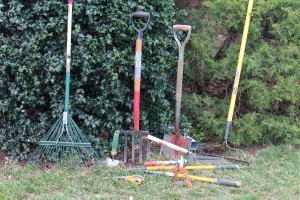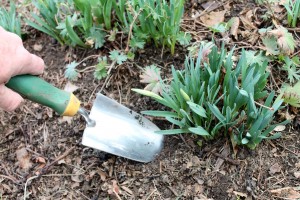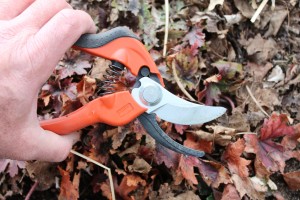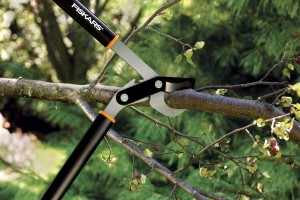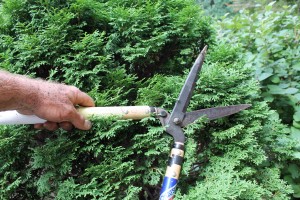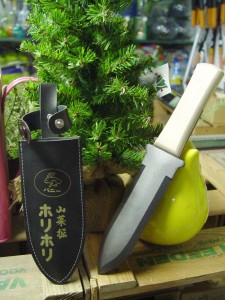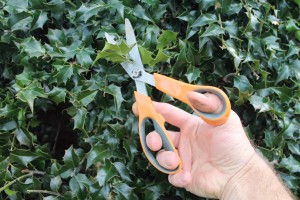Top 10 Tools to Conquer the Landscape
With an arsenal of 10 tools – none of them plug-ins – you’ll be able to tackle just about any job around the yard.
So whether you’re just getting started in gardening this season or planning to kick it up a notch, here are the tools of the trade that I’d most recommend:
1.) Trowel. Think of this as a little shovel that’s the go-to tool for planting vegetables, small potted flowers and bulbs.
You can get cheapie ones for a few dollars, but they’ll usually bend and/or come apart at the welded handle within a few years (or less).
That may be OK for beginners or light use, but for heavier-duty gardening, spend a few bucks more to get a sturdy, one-piece trowel with a soft or ergonomic handle.
2.) Shovel. You’ll encounter a surprising number of variations for something this basic, which is a sharp-edged, foot-powered blade for cutting into and moving dirt.
First, get one that suits your height to make digging as easy as possible on the back. Also compare weights. Some are much lighter than others.
Second, get a shovel with a blade that comes to a point, which penetrates compacted soil better than a long-handled spade, which has a straight edge. (Those are excellent for edging, though.)
Third, look for one that has a wide platform where you put your foot to dig. A narrow top of the blade hurts your foot more after even just a few minutes of digging.
And fourth, decide whether you like a D-shaped handle top or just a long, straight handle.
3.) Bypass pruners. These are scissor-like tools intended for cutting small branches individually.
Bypass types have blades that slide by one another as opposed to anvil types, which have one wider, flatter side and one curved, sharp blade.
Bypass pruners make cleaner cuts. Anvil pruners make more crushing cuts.
Again, you can get cheap ones for under $10 that are often plastic-handled and go dull fast, or you can spring for $50 and up on ergonomic, re-sharpenable, last-a-lifetime versions, such as the Felco brand that most pros swear by.
Corona makes a fairly decent low-cost line of bypass pruners that I like. I’m also happy with my Bahco-brand pruners that are close to Felco performance but with a price tag about 25 percent less.
4.) Loppers. Your little hand-held pruners are good for branches up to about one-quarter of an inch, but for bigger tree and shrub branches, you’ll need loppers (or if you prefer, a tree saw).
Loppers are overgrown pruners with long handles for extra leverage. As with pruners, opt for bypass-type blades instead of anvil types.
Keep them sharp for easy cutting, but don’t overdo the branch size or you’ll bend the handles. For branches bigger than the lopper’s mouth, you’ll need a saw – or better yet, a new game plan of pruning misguided branches before they get that big.
Ratchet mechanisms are built into some loppers to make cutting even easier. They work reasonably well.
5.) Shears. This is your third cutting tool – very large scissors that you operate with two hands to cut lots of small branches in a single swipe (think hedges or similar sculpted plants).
Shears are also useful for cutting back perennials and ornamental grasses at season’s end and for deadheading masses of spent flowers in a garden bed.
There’s not a lot of quality differentiation here, so I’ve always leaned to the low-cost ones. Keeping whatever you buy sharp is more important.
If you have lots of hedges or a big yard, consider power shears. These come in gas-powered, electric and rechargeable-battery types.
6.) Japanese Hori-Hori garden knife. If you’re going to try to garden with just one tool, start with this stout, serrated knife.
This highly versatile tool is strong and pointed for both weed-digging and for loosening the soil to plant small plants or bulbs.
The serrated edges let you cut plant stems, small branches and twine or rough up the soil surface like a mini-hoe.
And the blade has a depth gauge to help you determine bulb depth. You’ll probably think of other uses, too. Very handy item…
7.) Garden fork. This is a long-handled tool with four sturdy tines at the business end. It’s mainly intended for digging and loosening soil.
The advantage it has over a shovel is that it does a better job of breaking apart soil clods. Shovel-dug clay soil comes up in shovel-sized pieces, then you have to slice and beat it into something resembling plantable soil.
Garden forks also can be used for turning compost, saving you the expense of a separate pitchfork.
8.) Leaf rake. Also a long-handled tool, this rake has multiple “springy” tines that make it ideal for raking leaves and other debris off the lawn.
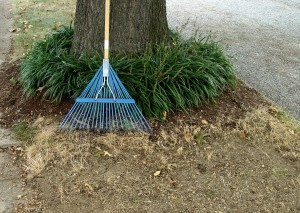
A leaf rake not only gets rid of leaves on the lawn, it’s useful for other cleanup jobs and light soil-smoothing.
It’s also the best tool for cleaning spent plants and debris out of the landscape beds, especially at winter’s end.
Metal and plastic tines last longer than bamboo ones.
9.) Garden rake. Garden rakes differ from leaf rakes in that they have fewer, shorter and stiffer metal tines as well as a flat back side.
Rather than lawn and garden cleanup, these are intended to smooth the soil after digging, tilling and/or loosening a bed.
Garden rakes are also useful in roughing up the soil in thin lawn patches in preparation of planting new grass seed.
And they’re great for smoothing mulch after dumping piles of it over the beds.
10.) Garden scissors. These are stronger, heavier scissors than paper-cutting ones, which makes them useful for snipping plant stems as well as cutting miscellaneous other items that a garden entails (twine, seed packets, sheets of plastic mulch, floating row covers, recycled plastic being turned into plant labels, etc. etc.)
Get ones with bright-colored handles so you’re less likely to lose them or let them sit outside and rust.








